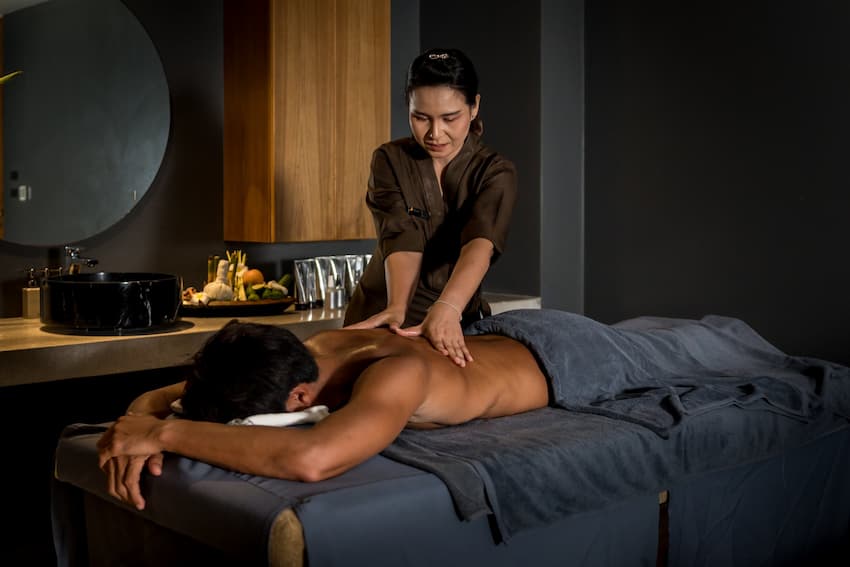Wellness isn’t just about working out or winding down, it’s about striking the right balance between movement and recovery. For those striving toward full-body health, integrating fitness training with therapeutic massage can be a game-changer. Whether you’re chasing performance goals or simply aiming to feel better in your body, this powerful combination supports muscle repair, reduces stress, and enhances long-term vitality. When these two practices go hand in hand, they help prepare your body to perform at its best, creating a synergy that transforms not only how your body performs, but also how it feels.
The Science of Synergy: Why Movement Needs Massage
A solid fitness routine builds strength, endurance, and mobility – but it also puts stress on muscles, joints, and connective tissues. Over time, if not properly managed, that strain can lead to stiffness, soreness, and even injury. That’s where therapeutic massage becomes essential, not just as a luxury but as an integral part of the recovery process.
Massage supports muscle recovery by increasing circulation, reducing inflammation, and promoting the breakdown of scar tissue. It can also improve flexibility and joint mobility, making it easier to return to workouts feeling refreshed rather than worn out. Regular therapeutic sessions have been shown to help reduce delayed-onset muscle soreness (DOMS), so you’re not hobbling around for days after leg day.
1. Reduces Stress Physically and Mentally
Stress doesn’t just live in the mind, it lives in the muscles. Tight shoulders, tension headaches, and shallow breathing are all physical symptoms of stress that can hinder athletic performance and everyday functioning.
Massage therapy taps into the parasympathetic nervous system, calming the body’s stress response and allowing it to rest and reset. Combined with consistent workouts, this one-two punch helps regulate mood, lower anxiety, and even improve sleep. A gym that offers structured performance training emphasizes not just pushing physical limits, but doing so with a foundation of recovery and support. This approach helps athletes and everyday fitness enthusiasts alike stay grounded, both mentally and physically.
2. Enhances Muscle Recovery and Performance
Sore muscles are a natural part of working out, but they don’t have to be a roadblock. Therapeutic massage helps flush out lactic acid and toxins that build up during intense training sessions. It also encourages blood flow to fatigued areas, which speeds up healing and minimizes downtime.
One performance-based training program, known for its emphasis on speed, agility, and explosive movement, incorporates recovery into its routine by encouraging a full-body wellness model. This type of training places significant demand on the musculoskeletal system, and when paired with massage therapy, athletes experience faster recovery, more efficient muscle repair, and reduced risk of overtraining.
3. Improves Flexibility and Range of Motion
Increased strength without mobility can lead to imbalance. That’s why flexibility and proper joint function are key to both preventing injuries and performing at your peak. While stretching is important, massage provides a more targeted approach by releasing fascial tension and lengthening muscle fibers manually.
Clients who regularly receive therapeutic massage often report greater ease during exercise movements and reduced stiffness during daily activities. Whether it’s reaching deeper into a squat or swinging a golf club with more freedom, the benefits go beyond the massage table.
4. Supports Holistic Health and Body Awareness
Massage helps people reconnect with their bodies in a way that fitness alone often doesn’t. When you lie still on a massage table, you’re giving your body a moment to be felt and cared for, not just pushed and challenged. It’s in that quiet space where healing happens.
Massage therapists who specialize in therapeutic modalities often tailor their sessions to target specific muscle groups, chronic pain, or injury recovery. They focus on building long-term resilience, not just temporary relief. Centers like Oasis Healing Functional Medicine & Wellness Center of Los Angeles, CA exemplify this approach by combining personalized care with a deep understanding of the body’s healing mechanisms. This philosophy complements structured training environments where every movement has a purpose and progress is tracked. The result is a deeper sense of body awareness that helps people move better, feel better, and avoid setbacks.
5. Encourages Consistency and Long-Term Wellness
One of the biggest obstacles in any wellness journey is staying consistent. Pain, fatigue, and burnout can quickly derail even the most dedicated routines. Incorporating massage into your weekly or bi-weekly schedule keeps your body in optimal condition, helping you maintain momentum.
Those who engage in guided fitness programs supported by integrated wellness practices often find it easier to stick with their goals. When your muscles feel good and your stress levels are under control, you’re more likely to show up – not just at the gym, but in life.
Combining fitness and therapeutic massage isn’t just about luxury or indulgence – it’s a practical, evidence-based strategy for total body wellness. It helps prevent injury, boosts mood, accelerates recovery, and makes your fitness journey more sustainable and enjoyable. Whether you’re lifting weights, running drills, or just trying to feel more at ease in your own skin, pairing movement with mindful recovery can take your health to the next level. When strength meets serenity, real transformation begins.

